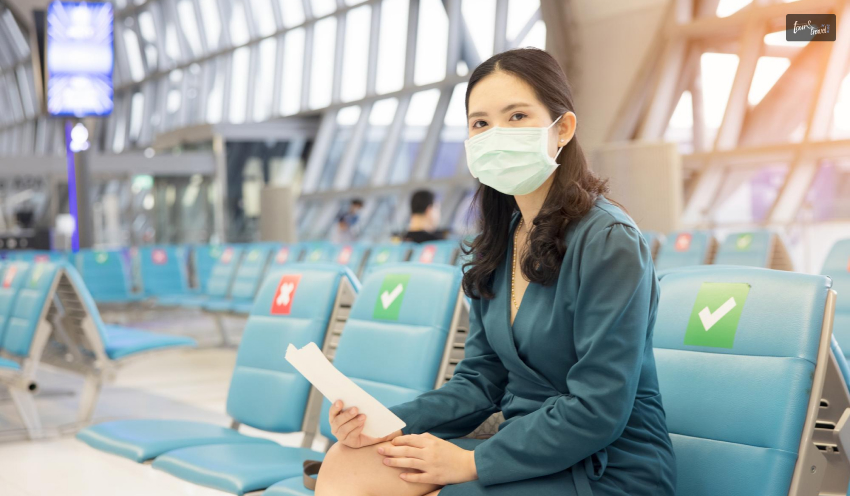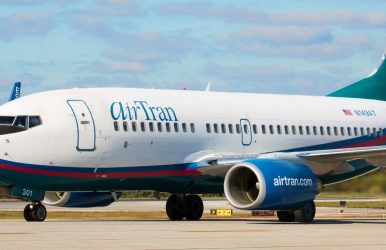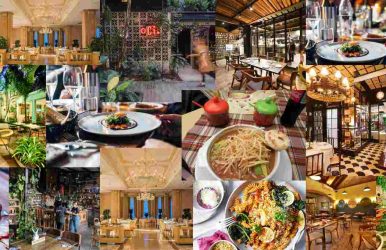Dark Tourism In Singapore | 5+ Must Visits In The Lion City
BY Sibashree Sep 30, 2024
Singapore is one of the top countries in dark tourism if you consider the market growth rate. The country, known as the “Asia Light,” was a British colony, and for them, it became a strategic commercial point. With British rule established here, it became a land of trade, fortification, and military activities. Further, in 1941, Singapore was hit by Japanese attacks. Remember, it was coordinated with the attack of Japan on Pearl Harbor. However, the British rule and the Japanese attacks are just the tip of the iceberg if you look at Singapore's war-trodden and complex political history. Thus, you will find many sites in Singapore that tell the tales of tragic human incidents. Even if all the places for dark tourism in Singapore are not related to death, there is something mysterious or “somber” about them. Moreover, the dark tourism sites in Singapore are the places to familiarize oneself with the history of the country, its political landscape, and human stories. THESE Are The Best Destinations For Dark Tourism In Singapore Most sites for dark tourism in Singapore are related to WWII and Imperial Japanese attacks. Despite being a center of British fortification, it failed to protect itself from those ravages. Let’s explore the places that present Singapore when it was a British Colony fighting against Japanese invasions. Kranji War Memorial Kranji War Memorial is a place to honor the people of the Commonwealth who died in World War II. It is heart-wrenching to see the names of the allies on the walls of the Kranji War Memorial. Can you believe that there are inscriptions of 24000 allies whose bodies were never found? Further, it is the burial of more than 4000 people who died in the Second World War. At Kranji War Memorial, you must visit the following spots to remember the brave and lost souls. War Graves Memorial Walls Singapore Wall State Cemetery Military Graves Singapore Civil Hospital Grave Memorial The Singapore Memorial is the highest point of this cemetery. This iconic structure has soldiers standing in attention, a plane’s wings, and the fin of a submarine. Choa Chu Kang Cemetery | Another Dark Tourism Site Near The Kranji War Memorial After exploring the Kranji War Memorial, you can bring out your adventurous spirit. The Choa Chu Kang Cemetery is less than 20 Kms away from the Kranji War Memorial. The architecture of the cemetery has an eerie appeal. Further, passers-by from the area have often reported seeing women trying to board their cars. In addition, many cab drivers have carried passengers to the cemetery. However, these passengers suddenly vanished into the air. Pasir Ris Tower: A Ghost Tourism Site Near The Kranji War Memorial Pasir Ris Tower, also known as the Suicide Tower, is one of the most haunted places in Singapore. According to stories, a boy with the special power to see spirits saw a person at the top of the tower. He climbed up the tower but got pushed down by someone. Even today, anyone approaching the tower has a strange feeling. The fear is so intense here that people have stopped exploring or ghost hunting. Changi Chapel & Museum Changi Chapel & Museum is one of the best spots for dark tourism in Singapore because of its educational value. This educational center passes on the heroic stories of Changi that occurred during the Japanese occupation of the country. Further, the Changi Museum is dedicated to people who lived and died in the Changi prison during World War II. Moreover, the Changi Chapel took inspiration from St George’s Church in its architecture. The prisoners of war (POWs) worked to furnish the church. The Changi Chapel and Museum has a guide on wheels. Temi is a robot with the knowledge and information to help visitors navigate the museum and learn about the exhibits. Changi, A Hub Of Dark Tourism In Singapore Dark tourism is not just about places of tragic human history. Ghost tourism is an important category of dark tourism. When in Changi, you will come across some of the most haunted places in Singapore. So, are you ready to walk into the shadows? Old Changi Hospital The Old Changi Hospital was constructed for the treatment of British soldiers. However, under the Japanese troops, it became the house of the prisoners of war. You can still hear the screams of these prisoners when you are near this hospital. Changi Old Beach House The Changi Old Beach House is the site where the Sook Ching Massacre took place. Many visitors to this house have experienced screams, and they have seen blood stains on the walls. Also, many have claimed to see violent paranormal activities at Changi Old Beach House. The Battle Box The Battle Box was a British underground command center located at Fort Canning Hill. It functioned as a part of the Malaya Command headquarters. Further, the Malaya Command headquarters defended Singapore and Malaya during World War II. The site was restored in 2016. Further, it is a site that speaks about the true reasons behind the fall of Singapore during World War II. So, it is an important educational and tourist destination in Singapore today. Lieutenant-General Arthur E. Percival and Allied Forces decided to surrender to the Japanese Forces at The Battle Box. The surrender happened on 15th February 1942. Haw Par Villa For me, Haw Par Villa is one of the scariest sites I have visited. According to Chinese mythology, there are ten hells, and Haw Par Villa mimics them. However, the scariest thing about Haw Par Villa is that you can hear screams from this area at night. Also, many people believe that the statues here are real human beings covered in wax. Further, the local people call it one of the doors of hell. Even if you are not up for its haunted story, you can visit this site to see the 1000 statues and dioramas. These structures are the best displays of Asian craftsmanship. Further, the stories of 10 hells presented here are the fusion of various Oriental beliefs and philosophies like Hinduism, Taoism, and Buddhism. Haw Par Villa, or the ten courts of hell, are “the result of the mixing of four different religions and philosophies: Buddhism, Taoism, Hinduism, Confucianism.”Eisen Teo, the chief curator of Hell’s Museum Fort Siloso Fort Siloso gets its name from the Malayan word Siloso, meaning rock. It is the only coastal fort in Singapore and has played a significant role in the country’s defense. This fort has an on-site military museum filled with the memorabilia of World War II. The most striking elements of the museum are tunnels, fortified military structures, interactive video documentaries, and wax figures. The wax statues at the Surrender Chambers depict British and Japanese soldiers. Reflections At Bukit Chandu https://www.instagram.com/p/CgB2RnvOoDU/ Reflections At Bukit Chandu is an interpretative center for dark tourism in Singapore for educational and historical purposes. Today, the Reflections at Bukit Chandu tell the tales of the Battle of Pasir Panjang in 1942. The Battle Point 226 here is a testament to how the Malay Regiment stood against the Japanese troops. Malay Regiment began its journey only with a recruit of 25 people in 1933. Within 10 years, this “experimental company” was strong enough to combat the Imperial Japanese forces. The Japanese killed a hundred men from the Malay Regiment, and a few more were butchered as they refused to take off their uniforms during the surrender of Singapore. Reflections At Bukit Chandu commemorates and presents the sacrifice of the men in the Malay Regiment as they lived up to the “Ta'at Setia,” or “Faithful and true” motto. You must explore the following collectibles at Reflections At Bukit Chandu. British .303-inch projectiles The entrenching set of the British Army Personal kit used by the British Army Bronze bust of Lieutenant Adnan Saidi Marseille roof tile Sculpture depicting the Malay Regiment You will find many publications on World War II at the visitor shop here. Moreover, don’t forget to read the poetry by Edwin Thumboo and Noorhaqmal Mohamed Noor to reflect upon the bravery of the Malay Regiment. That’s it! Enjoy dark tourism in Singapore and explore various aspects of the country’s history. These places are beyond local or national importance as they are testaments to World War II, triggering human tragedy all over the world. After you are done with your dark tourism in terest in Singapore, it is time for you to check some other opportunities at that place. For instance, consider tax consultancy services for all your tax requirements on a business trip in Singapore. Also read Top 10 Most Popular Paraguay Food That You Must Try. Top 13 Famous Wonders Of India That You Must Visit! [Updated 2024] Top Tips For Motorbike Rental In Phuket – A Guide To Exploring The Island On Two Wheels.












